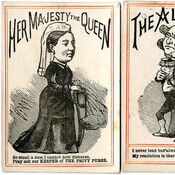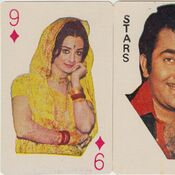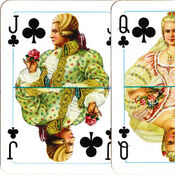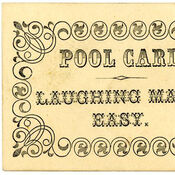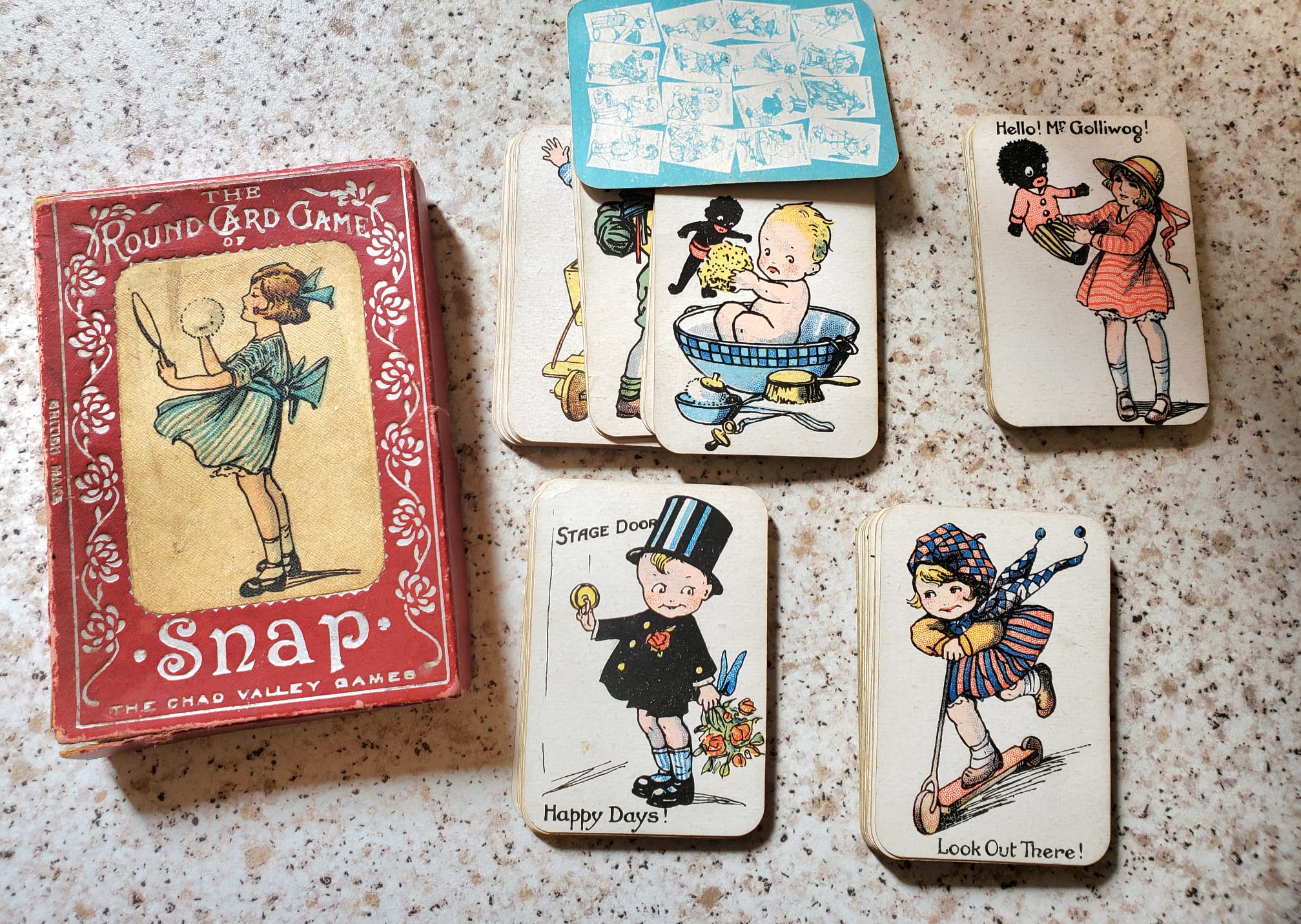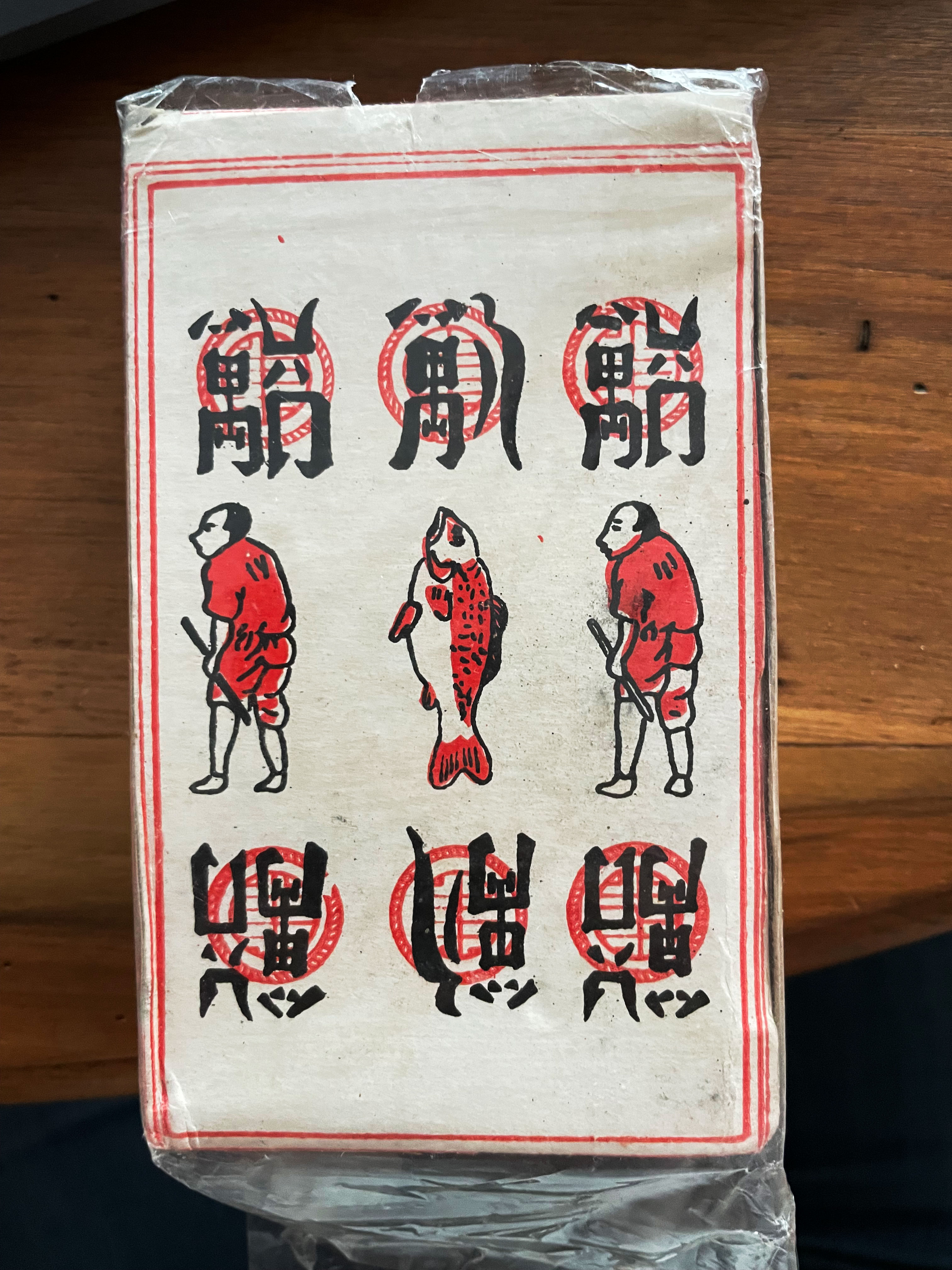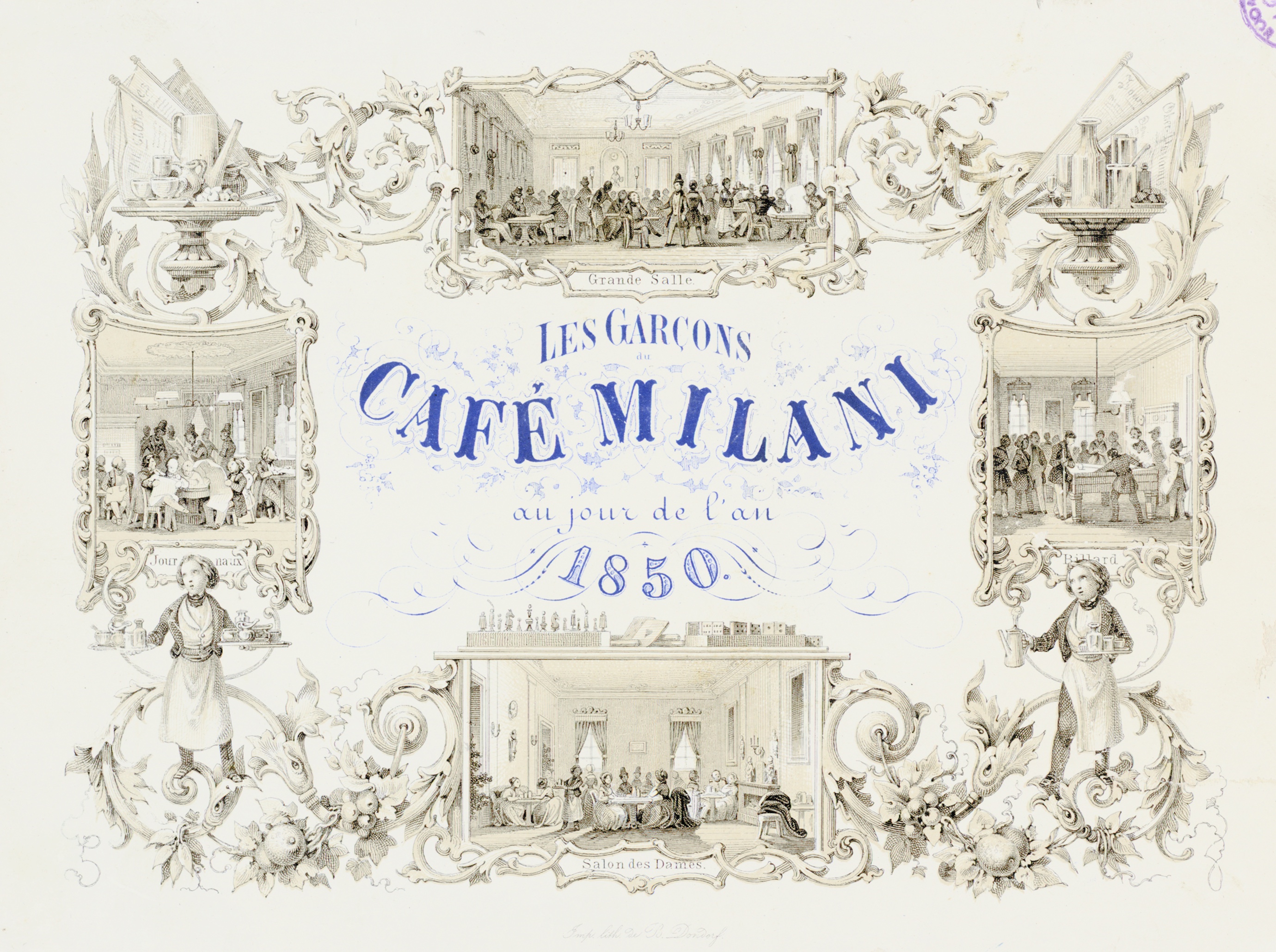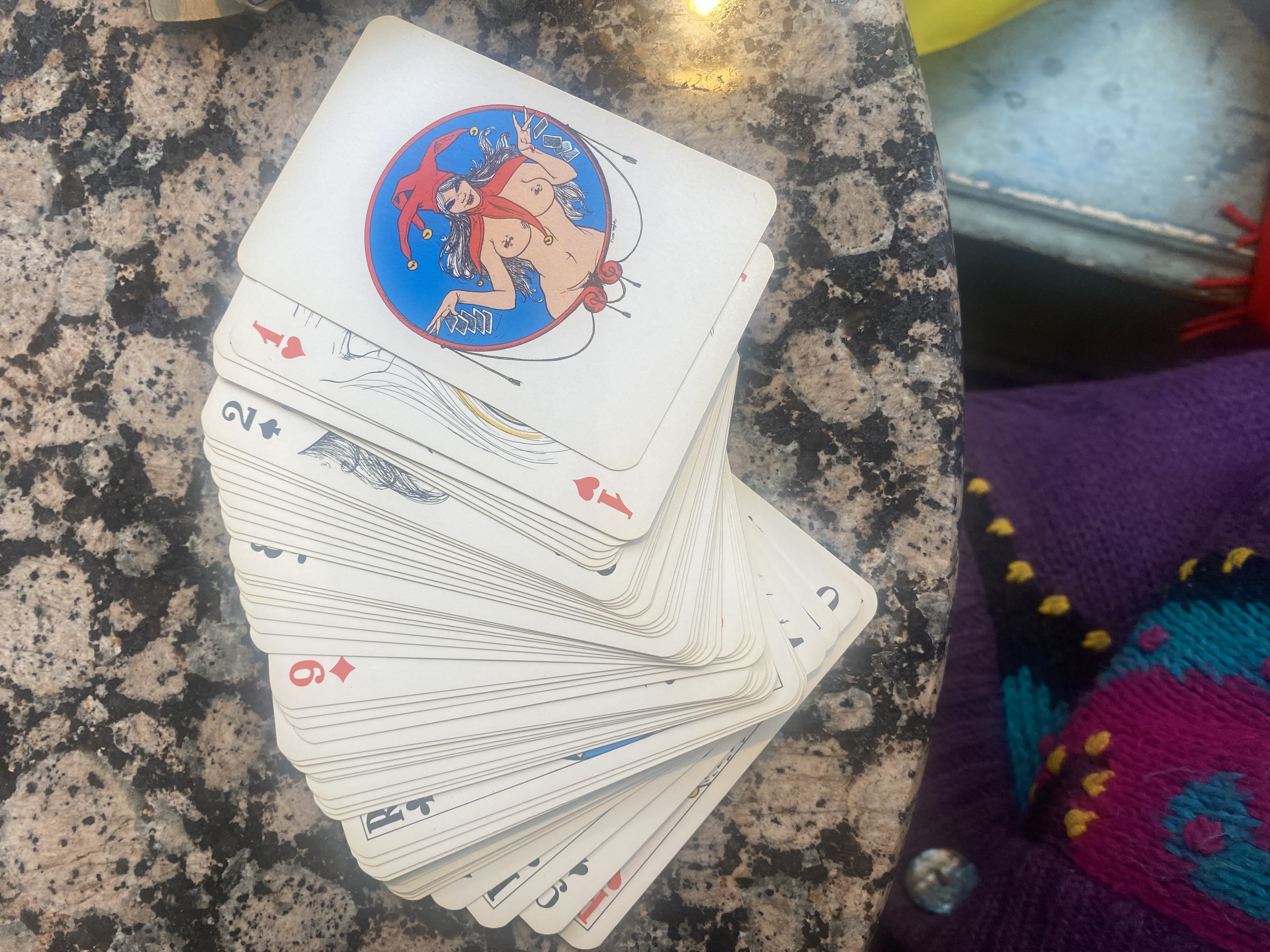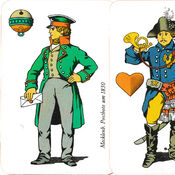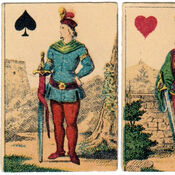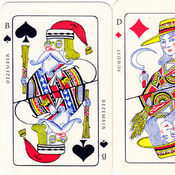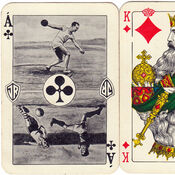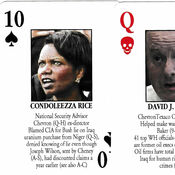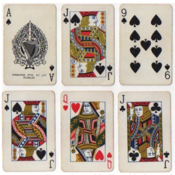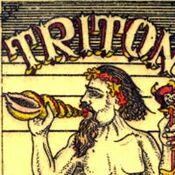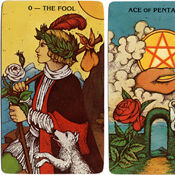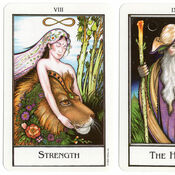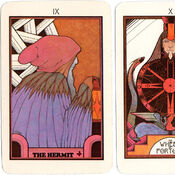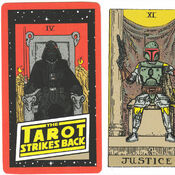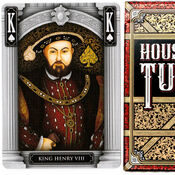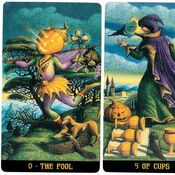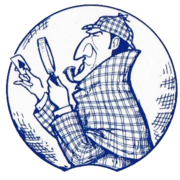
Playing cards combine many aspects of our history including paper-making, printing technologies, innovation, symbolism, graphic design and how these have changed over the years. Whatever your interest in cards, you'll find something interesting here.

Miniature spanish-suited playing cards
Pack of 48 miniature spanish playing-cards published by C R.
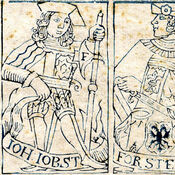
Uncut Sheet by Johann Jobst Forster
A proof sheet containing twelve court cards of conventional French type.
Lend Me Five Shillings
or “Her Majesty’s Privy Purse” - a merry round-the-table game published by D. Ogilvy.
Eves Playing Cards
A pack of cards with colour photos of Indian film stars from the era
Poker Lusso
Richly costumed courts on a luxury poker pack from Masenghini.
Laughing Made Easy
a Victorian card game published by D. Ogilvy.
Postgeschichte
A celebration of different postal systems in Germany from 1630 to 1850, with designs by Volker Hartm...
Baraja Napoleónica
Re-edition of a French-suited Spanish pack from the Napoleonic era, with designs by J. Carrafa.
Das Tübinger Skatspiel
Pack devised by Volker Scheub depicting characters associated with the city of Tübingen.
Miniature Theatre playing cards
Miniature playing cards, possibly for children, with a romantic theatrical theme. C.L. Wüst c.1890. ...
A New Year’s Greeting
in the form of playing cards
Reykjavik Athletic Club playing cards
made in Iceland
Gaudí playing cards
Gaudí playing cards with photography by Ramon Manent, Spain, 2002.
Try’em playing cards
Try’em: the U.S. Regime Change, or “52 Most Wanted Criminals” c. 2003.

Singapore Trump
“Singapore Trump” playing cards designed by Yasuko Senshu.
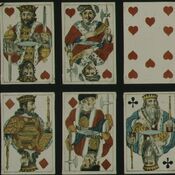
63: The descendants of the French regional patterns: 1
A great many regional patterns were exported from France and subsequently copied elsewhere. Some of ...

69: My Collection
This is an archive list of my collection. I hope it will be of use and interest to others.
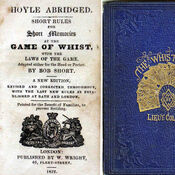
Whist writers and pseudonyms
Why did so many early writers about whist and other card games feel the need to write under a pseudo...
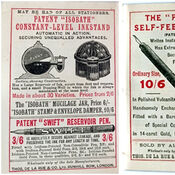
What can we learn from mini-booklet advertisements?
Over the years I have collected a large number of mini-booklets and pocket guides offering rules and...

Cribbage Board Collection part 3
A collection of antique and vintage Cribbage Boards by Tony Hall, part 3

Kimberley
Kimberley’s Royal National Patriotic playing cards, c.1892-1905.

Cartes Comiques, 1870-1888
“Cartes Comiques”, published by B. Dondorf, printed by chromolithography, c.1870-1888.
Karl Gerich No.31: Triton
“Triton”, KG31, was published by Karl Gerich in 1989 trading as Victoria Playing Card Co with double...
Standard Swedish Pattern
Standard Swedish type playing cards manufactured by J.O. Öberg & Son, Eskilstuna, 1929.
Tarocco Bolognese
Tarocco Bolognese
Morgan-Greer Tarot
Based on the knowledge, wisdom and interpretation of Paul Foster Case and Arthur Edward Waite.
New Palladini Tarot
“The New Palladini Tarot” by David Palladini published by U.S. Games Inc., in 1996.
The Aquarian Tarot Deck
The Aquarian Tarot Deck illustrated by David Palladini, published by Morgan Press, Inc., 1970.
The Tarot Strikes Back
Roy Huteson Stewart's The Tarot Strikes Back combines Star Wars with Rider-Waite tarot imagery.
House of Tudor
Randy Butterfield's House of Tudor playing cards feature detailed art in a high-quality collectible ...
Jack-O’-Lantern Tarot
Giuliano Costa's Jack-O’-Lantern tarot blends Rider-Waite symbolism with the rich and atmospheric th...

Miniature spanish-suited playing cards
Pack of 48 miniature spanish playing-cards published by C R.

Uncut Sheet by Johann Jobst Forster
A proof sheet containing twelve court cards of conventional French type.
Lend Me Five Shillings
or “Her Majesty’s Privy Purse” - a merry round-the-table game published by D. Ogilvy.
The History of Playing Cards

Playing cards arrived in Europe the late 14th century and rapidly became a part of popular culture. Antique playing cards are like a visit to the local museum and evoke images of past eras and ways of life and also demonstrate archaic technology or production methods. So what do the oldest surviving playing cards look like?
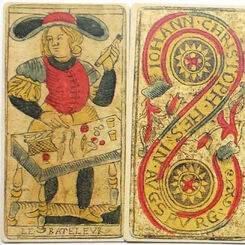
Iohann Christoph Hes Tarot c.1750
Facsimile of Tarot de Marseille by Iohann Christoph Hes, Augsburg, c.1750.
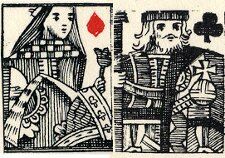
South Sea Bubble
The South Sea Bubble Playing Cards were first published in London by Thomas Bowles in 1720. The card...

History of Online Casinos
Online casinos appeared shortly after the internet became a more mainstream tool for the public to u...
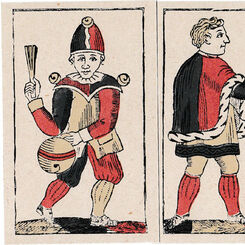
Johannes Müller c.1840
Facsimile edition of Swiss suited deck first published by Johannes Müller in c.1840.
Art & Design
Design Caricatures Abstract Cartoon Celtic Deco Jugendstil Renaissance Rococo Surrealism
 The playing card calls for artistic treatment and although the constrained size imposes some limitations there is an almost bewildering wealth and variety of designs in playing cards and their tuck boxes. The serious player requires design to be unobtrusive so that aesthetic considerations remain in the background. However, with modern manufacturing technology more eye-catching designs are becoming popular as gifts, collectibles and for their attractive appearance.
The playing card calls for artistic treatment and although the constrained size imposes some limitations there is an almost bewildering wealth and variety of designs in playing cards and their tuck boxes. The serious player requires design to be unobtrusive so that aesthetic considerations remain in the background. However, with modern manufacturing technology more eye-catching designs are becoming popular as gifts, collectibles and for their attractive appearance.
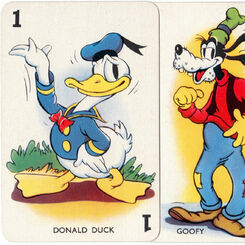
Shuffled Symphonies
Shuffled Symphonies published by Pepys Games in association with Walt Disney, 1939.

Vaivorykste (The Rainbow)
Vaivorykštė ('the Rainbow') playing cards manufactured in Lithuania by Spindulys, 1930s. The deck ha...
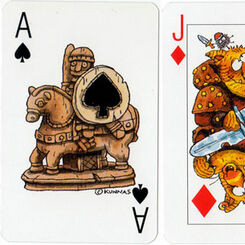
Kuningas Artturin Ritarit
“Kuningas Artturin Ritarit” (King Arthur’s Knights) playing cards designed by Mauri Kunnas
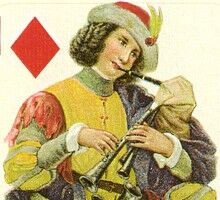
Humanist pack by J. Müller & Cie
'Humanist' pack made by J. Müller & Cie (Schaffhouse), originally named 'Troubador'. The pack was d...
Oracle, Divination & Tarot
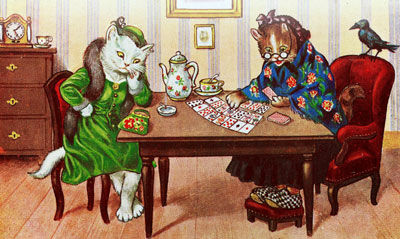
More recently, Cartomancy and modern esoteric tarot packs have been produced in a wide variety of conceptions and involve use of imagination and intuition to assess one’s thoughts and feelings from the view point of the symbolic images and numbers.
It is possible for an object to be construed as a game in one context, and as something other than a game in a different context.
Tarot, originally a 15th century card game, has evolved into a popular system of personal mysticism, self-exploration and spirituality Learn more about tarot►

Playing Cards and Calendars
In this video Ana Cortez examines the relationship between ordinary playing cards and the calendar. ...
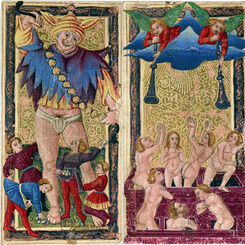
Hand-Painted Tarocchi Cards
Hand-painted Tarocchi cards sometimes known as ‘Charles VI tarot’, North Italy, 1475-1500.
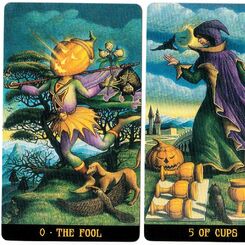
Jack-O’-Lantern Tarot
Giuliano Costa's Jack-O’-Lantern tarot blends Rider-Waite symbolism with the rich and atmospheric th...

Thomson-Leng Tarot
The Thomson-Leng Tarot Cards were issued by the publishers of women's magazines during the 1930s. Th...

The games we play mirror the world we live in, like popular art. There was a time when friends and family played indoor games by the fireside and enjoyed countless hours of pleasure and amusement. Children don’t play card games so much because they prefer computer games, the ultimate excitement. Antique and vintage card games offer documentary evidence, as well as nostalgic memories, of the social interaction, fashions and stereotypes of bygone days and are a study in social anthropology.
French card games are mostly Jeux des Sept Familles. German games are often pleasing on the eye, and they seem to favour quartet games. USA love quartets of world worthies like authors, painters, composers. Games are not simply an escape from the real world, they are also educational and provide a place to process what it all means.

EPCS August 1994 Newsletter
Jack & Jill • Merry Matches • Prince of Wales • Smiths Potato Crisps • El-Al Airlines • Isle of Man ...

C.W. Faulkner
C. W. Faulkner & Co Ltd, London, an important publisher of games, pictorial souvenirs, children’s bo...
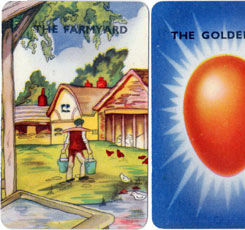
Golden Egg
Chad Valley “Golden Egg” card game.
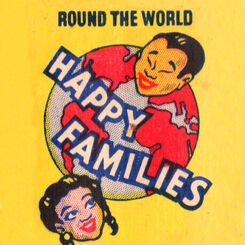
Children's Card Games
Children's games are distinct from ordinary playing cards, the most obvious difference being the lac...
The Big Picture
Playing cards have a universal appeal and are a reflection of human culture.

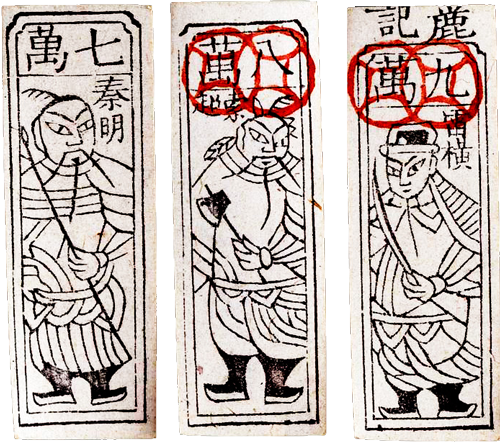
Above: Chinese money-suited cards. Some of the earliest cards have origins in the Far East.
Playing cards are a part of almost every culture and society around the world. These small, rectangular pieces of paper have been a source of entertainment for generations and are still enjoyed by people of all ages today. Whether it’s a simple game of solitaire, a high-stakes game of poker, or a magic trick that delights, there’s something about playing cards that captures the imagination and inspires creativity. As Delef Hoffmann once said “whether we consider cards as mere merchandise or as the bond which unites people with one another, just think of what we would be if we had no cards! How boring and unsociable our lives would be without this invention!”
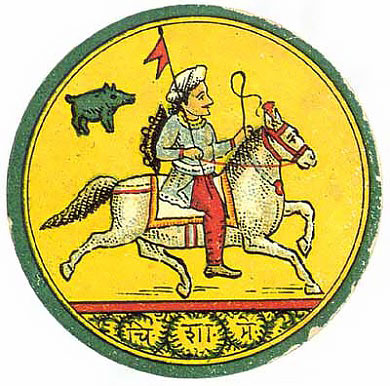
Above: Dasavatara Ganjifa from India. Playing cards from India are often circular.
The origin of cards can be traced back to China, where they were first used as early as the 9th century. From there, the cards travelled across Asia and the Middle East, and finally found their way to Europe in the 14th century.
Since then, playing cards have been used for a wide range of purposes, including fortune-telling and even propaganda. But the most significant impact they have had on humanity is through their use in games, which have brought people together for centuries.
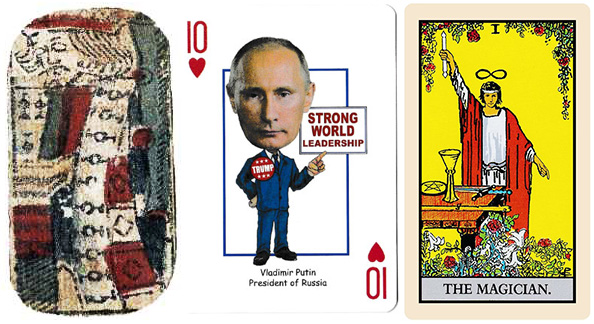
Above left: a set of Spanish playing cards from 1638 was discovered inside a prison wall during demolition, likely used for gambling by prisoners. Above center: Trump Presidential playing cards, playing cards are often used for political messages. Above right: the Magician from the popualr Rider-Waite tarot, which has become the template for modern tarot decks.
While playing cards have brought people together for fun and play, they have also been a source of disruption in the form of gambling. For many, gambling has become an addiction, leading to financial ruin and even anti-social problems.
The artistic value of cards cannot be overlooked, with their intricate details and unique designs of each card reflecting the creativity and ingenuity of artists. Playing cards are a reflection of our society, with each country and region having its unique designs and styles. As Sylvia Mann put it “there are fashions in cards, and these fashions very often reflect the history of the times”. From the bold and colourful designs of India to the intricate and detailed patterns of Russia, playing cards are a testament to the creativity and diversity of the human experience.
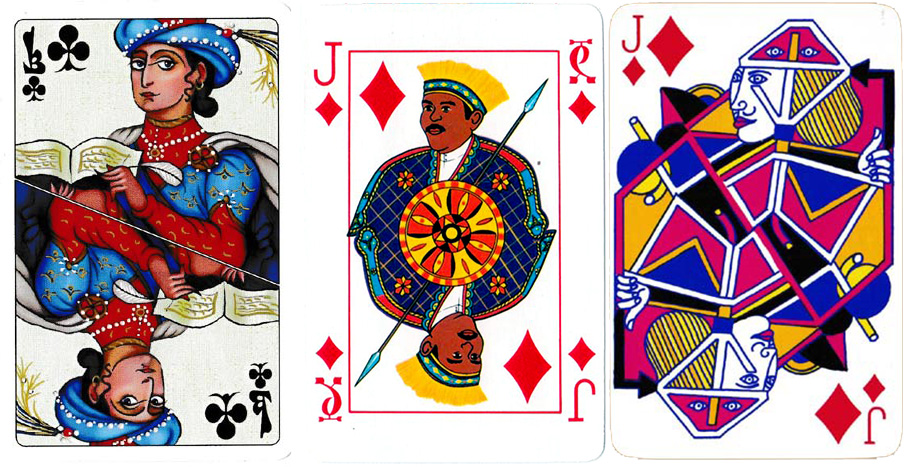
Above left: Kashmir Playing Cards, above center: Ethiopian Air Lines playing cards produced by Nintendo, above right: striking playing cards designed by Masuo Ikeda.
Playing cards have a wide embrace, spanning across cultures and countries, with a scope of diverse subjects that reflect the values and beliefs of their respective societies.
Playing cards are an enduring symbol of human connection and creativity, transcending language, borders and cultures. Through the power of games, they have brought people together for centuries, creating shared experiences that have fostered friendships, learning and social bonds. While their role in gambling has been disruptive, their stunning artistic designs elevate them to works of art, worthy of appreciation and admiration. Playing cards are a testament to the power of human creativity and a reflection of the rich cultural tapestry of our world.
References
- The Playing Card, Delef Hoffmann, 1972
- Collecting Playing Cards, Sylvia Mann, 1966
Contribute to the World of Playing Cards
We are searching for fresh voices to collaborate with and contribute to the growth of the World of Playing Cards.
If you have an interesting perspective, idea, theory, opinion, observation, or how-to guide related to playing cards that you’d like to share, then fill in the form below.
We are currently in search of:
- Reviews of card decks
- Reviews of literature related to playing cards (such as books on tarot, playing card magic or card games)
- Previews of upcoming playing card projects
- Interviews with designers
- Academic articles
- Research-based articles
Additionally, you can:
- Advertise a list of items for sale
- Promote a Kickstarter project
- Create your own playing card blog
- or just share your personal collection
It is important that the article you submit be entirely original content. Every article published will include an "About the Author" section with a link to your website, an avatar photo and a one-sentence bio.
How to Contribute?
Fill in the form below and we will get back to you.
About the World of Playing Cards
Our aim is to increase awareness and appreciation of the cultural and historical significance of playing cards.

The World of Playing Cards was established in 1996 as a place where you can learn about playing cards, their history, design and manufacture, and see cards from around the world.

Simon Wintle (right) with Adam Wintle (left) visiting Ayutthaya in Thailand, 2016.
They reflect the traditions of many countries. They vary widely in size, style, shape, artistry, usage and many other purposes in education, marketing or even for fortune telling. There is a fascination in playing card design: the neat symmetries and quirky symbols. The composition of the pack - court cards, suits, pips - provides endless scope of play.
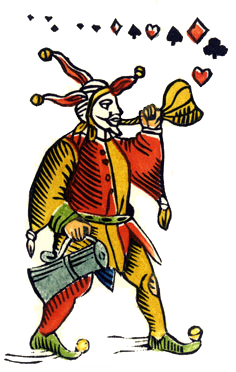
They are recognised everywhere around the world - we rarely question their origins.
Since their invention, cards have lost none of their popularity. Playing cards have a long history and it's in the art that the richness of playing cards is to be discovered.
Simon & Adam
We humbly ask for your help
We’re a team of two that depends on donations to ensure the site remains online and thriving.
We intentionally keep the site ad-free. Whilst revenue generated from advertisements could give us the resources to improve the website, on the other hand, advertising may be at odds with our mission and our aims to educate. By their very nature ads are biassed content intended to influence people.
The amount you donate is up to you and we are grateful that so many people find value in the World of Playing Cards and want to sustain its future.



